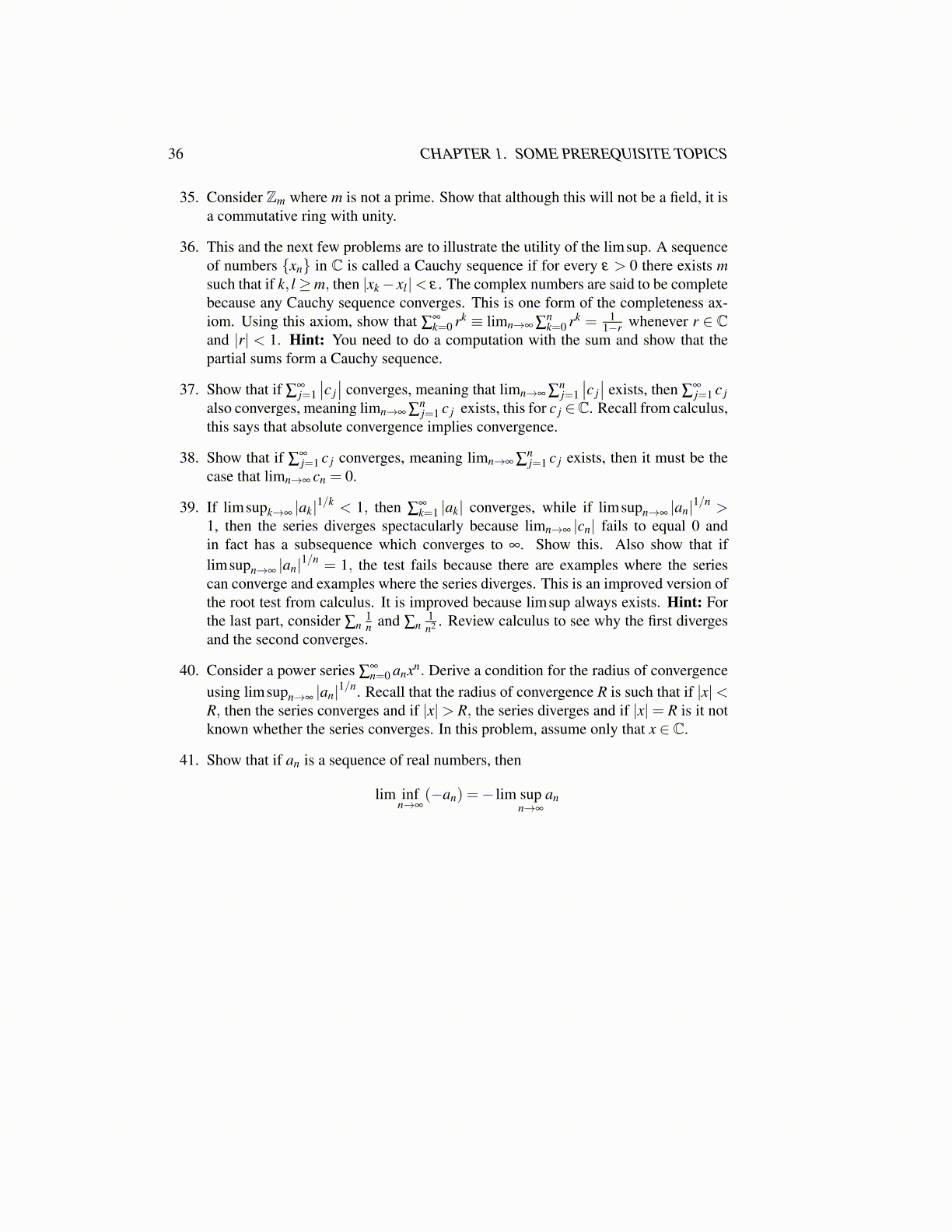
36 CHAPTER 1. SOME PREREQUISITE TOPICS
35. Consider Zm where m is not a prime. Show that although this will not be a field, it isa commutative ring with unity.
36. This and the next few problems are to illustrate the utility of the limsup. A sequenceof numbers {xn} in C is called a Cauchy sequence if for every ε > 0 there exists msuch that if k, l ≥m, then |xk− xl |< ε . The complex numbers are said to be completebecause any Cauchy sequence converges. This is one form of the completeness ax-iom. Using this axiom, show that ∑
∞k=0 rk ≡ limn→∞ ∑
nk=0 rk = 1
1−r whenever r ∈ Cand |r| < 1. Hint: You need to do a computation with the sum and show that thepartial sums form a Cauchy sequence.
37. Show that if ∑∞j=1∣∣c j∣∣ converges, meaning that limn→∞ ∑
nj=1
∣∣c j∣∣ exists, then ∑
∞j=1 c j
also converges, meaning limn→∞ ∑nj=1 c j exists, this for c j ∈C. Recall from calculus,
this says that absolute convergence implies convergence.
38. Show that if ∑∞j=1 c j converges, meaning limn→∞ ∑
nj=1 c j exists, then it must be the
case that limn→∞ cn = 0.
39. If limsupk→∞ |ak|1/k < 1, then ∑∞k=1 |ak| converges, while if limsupn→∞ |an|1/n >
1, then the series diverges spectacularly because limn→∞ |cn| fails to equal 0 andin fact has a subsequence which converges to ∞. Show this. Also show that iflimsupn→∞ |an|1/n = 1, the test fails because there are examples where the seriescan converge and examples where the series diverges. This is an improved version ofthe root test from calculus. It is improved because limsup always exists. Hint: Forthe last part, consider ∑n
1n and ∑n
1n2 . Review calculus to see why the first diverges
and the second converges.
40. Consider a power series ∑∞n=0 anxn. Derive a condition for the radius of convergence
using limsupn→∞ |an|1/n. Recall that the radius of convergence R is such that if |x|<R, then the series converges and if |x|> R, the series diverges and if |x|= R is it notknown whether the series converges. In this problem, assume only that x ∈ C.
41. Show that if an is a sequence of real numbers, then
lim infn→∞
(−an) =− lim supn→∞
an